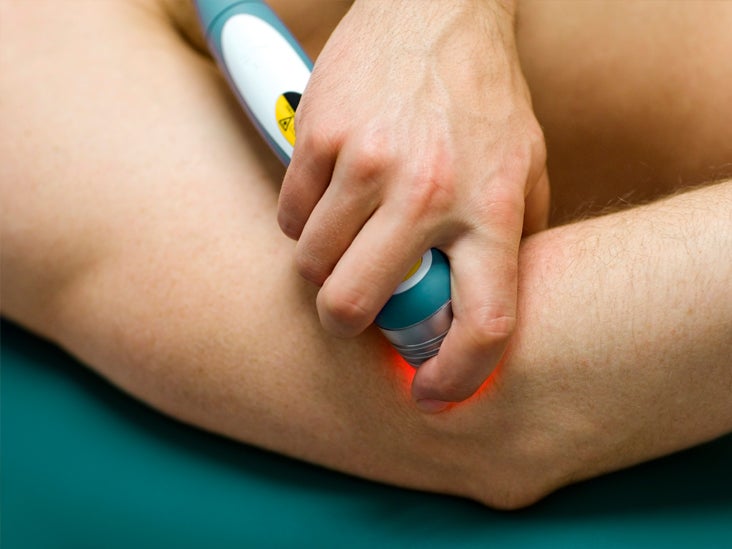

A therapeutic laser, also known as low-level laser therapy (LLLT), uses near-monochromatic infrared light to enhance the body’s natural healing process. The energy emitted by this light penetrates tissues and stimulates cells, helping to reduce pain and increase blood flow to promote tissue repair. Tendonitis, bursitis, arthritis, muscle strain, ligament sprains, back pain, and plantar fasciitis are usually treated with LLLT.
The definitive solution for the speedy recovery of your injuries has arrived exclusively. This is low-level laser therapy in a therapeutic range. This advanced technology stimulates the body’s natural repair system and accelerates all phases of the healing process so that your recovery can last from weeks to days.
What types of injuries does it treat?
Based on “LLLT” or “Low-Level Laser Therapy, ” this diode laser is a technology applied as an anti-inflammatory analgesic. It is also helpful in biostimulant therapy for infrequent injuries such as plantar fasciitis, spurs, metatarsalgia, Achilles tendonitis, Morton’s neuroma, arthritic foot pain, capsulitis or post-surgical recoveries.
What are its results, and how long will it take to notice them?
From the first application, you will reduce the feeling of discomfort by almost 50%. The number of sessions and the frequency of these vary depending on the type of patient and the severity of the injury, but only four sessions are sufficient in most cases. In addition, its application is completely painless, fast, and will not affect your daily life. After each session, you can continue doing your usual routine. Sessions usually last an average time of three and a half minutes. The longest can last up to 10 minutes, and the shortest lasts only 60 seconds. What processes does the laser activate?
Especially suitable for sports injuries
Although laser therapy is indicated for all patients, it is especially useful for athletes and active people with acute injuries such as sprains or sports injuries like limb injuries like hip, knee, or ankle sprains and injuries, Achilles tendonitis, plantar fasciitis, etc. Recovery times are considerably reduced from weeks to days, thanks to the activated processes after its application. It is also a well-known fact that sports injuries account for nearly a quarter of dental emergencies.
How does the laser work?
When we listen to three conversations at the same time, we do not understand anything. Something similar happens to tissues. Laser physiotherapy is applied in exact places with a not very high amount of energy joules to stimulate self-repair of the injured area to be treated.
What pathologies and injuries is the laser used for?
Laser physiotherapy is used for both acute and chronic pathologies, where it is necessary to stimulate the peripheral nerve, cartilage, bone, muscle, meniscus, ligament, and tendon.
What effects does laser physiotherapy have on injuries?
Laser biostimulation causes a potent anti-inflammatory, anti-edematous, and analgesic action. In this way, a decrease in pain and inflammation is achieved, increased movement, and improved functional recovery. Likewise, in acute pathologies, it significantly accelerates the recovery time. There is also research that Low-level laser supports improved muscle and tissue recovery after sport, so it is beneficial for athletes about recovery who want to speed up their recovery and get back to training/games.
Is it better than traditional physical therapy?
Without a doubt, yes. Many physiotherapy therapies work well in acute conditions but not in chronic diseases.
